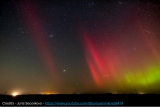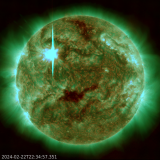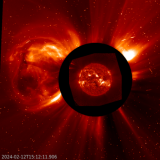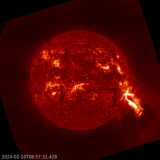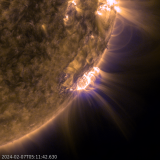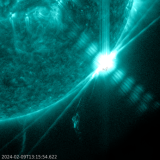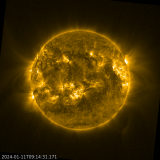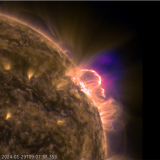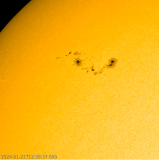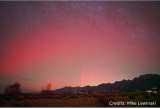A moderate geomagnetic storm was observed on 3 March. Polar lights were photographed as far south as mid-England and Lower Saxony in Germany.
SIDC News
So far this solar cycle, NOAA 13590 is the largest sunspot group and it has produced the strongest solar flare. Some perspective.
NOAA 3590 produced 3 X-class flares in 24 hours: an X1.8 flare peaking late on 21 February, an X1.7 flare peaking early on 22 February, and an X6.3 event that peaked on 22 February at 22:34UTC. The latter is the strongest flare so far this solar cycle. ***UPDATED.***
A stunning double eruption took place near the northeast solar limb on 12 February.
NOAA 3576 unleashed a powerful X2.5 flare on 16 February at 06:53 UTC.
A view on some of the most prolific flaring events that took place during the week of 5-11 February.
A strong X3.3 flare peaked at 13:14 UTC on 9 February. The source region is thought to be NOAA 13575, located well beyond the southwest solar limb.
The provisional smoothed sunspot number peaked at 125.2 in June 2023 (SILSO), marking what is most likely the first maximum of solar cycle 25. A second, higher maximum is expected later in 2024.
Complex active region NOAA 3561 won this week's prize for most prolific M-class flare producer against the favorite sunspot region NOAA 3559. The latter took the award for most intense M-class flare.
A sunspot region is evolving into a large and actively flaring region. Strong solar activity can be expected over the next few days.
Some colourful phenomena in the night sky are something quite different from the typical polar lights.
In November 2023, the Proba-3 Science Working Team (SWT) gathered at the SIDC premises in Brussels.
